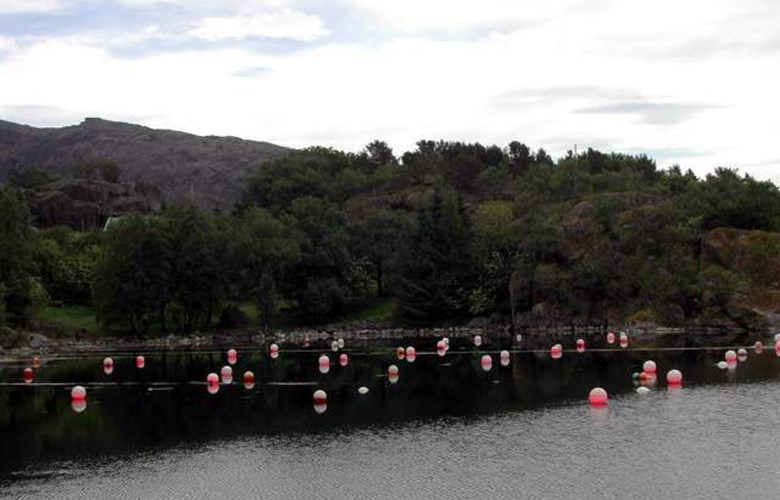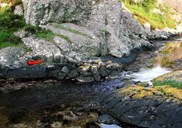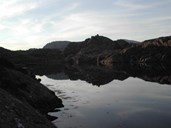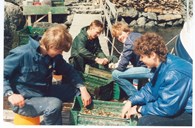Grew naturally in nature-made basins
The coves are seldom more than eight to ten metres deep and usually have a natural barrier against the sea. The exchange and circulation of water with the colder sea on the outside is therefore significantly reduced, or takes place only in exceptional cases. The soft mire on the sea floor contains a large number of various micro-organisms, which during swarming climb up and become feed for the oyster.
From time immemorial, this naturally grown oyster could be picked on rocks and slopes under the water surface and deeper. But in the 1870s, "by travelling people, partly with the help of divers, everything was taken that could be found".
Research and cultivation
Since there was a danger of extinction, it became imperative to initiate cultivation of oysters, in whichSelskabet for de norske Fiskeriers Fremme (society for the promotion of Norwegian fisheries)got involved. It was a question of utilizing the natural production of spat and breed it for sale. The society examined the localities people wanted to try out, and supported to some extent the purchase of oyster spat.
They had already noticed that in certain coves the production of spat was good, but that it grew very slowly. In others it was the opposite. The reason seemed to be difference in temperature. They therefore began to differentiate between spat coves, highest temperature, and "fattening" coves, for further growth.
The cultivation efforts gathered speed around 1900. Reports from an inspection trip to Solund in 1901, show six oyster coves in use, and that another five were picked for trial.

The two best ones located in the Nesefjorden
In 1895, digging and mining work was started to open up the Humlevågspollen on Nesøy to the sea. At the turn of the century, and later, the spat production there was very good. The spat sat on bundles of birch twigs which were lowered into the water. The spat was later put in baskets and hung into "fattening" coves.
Pollevik was the name of the other. Earlier, several barrels of wild oyster had been harvested here every year, and it was never necessary to put out spat from other places. In the 1870s, the passage into the seven-metre deep cove was overgrown with shells, but after a cleaning operation, the oyster flourished and grew as never before. Cultivation started in 1902. Of the oyster coves in Solund, this cove was in operation the longest into our time.
Solid dams built
In 1900, preparations for an oyster cove at Tungodden were started by building a wall and thus stem the water. At Tveranger also they closed the cove off with a strong wall, as was done at Straumspollen.
The Hardbakkepollen was located near Avløypeneset to the east of Kråka. In spite of "the troublesome road, far away from houses", this cove was regarded as a good "fattening" cove. Another "fattening" place was the "narrow, spiral Furrevikbugten in the Hagefjord". Here the conditions for growth were more moderate, in contrast to the Vaulenpollen, where the oyster grew to sale size in a short time.
The Humlevågpollen supplied spat for growth elsewhere. New places of experiment in 1901 were the Keilepollen in Krakhellesundet, the Fløytepollen in Bjørnefjorden, the Råkepollen, the Leirvikpoll (Råkesundet) north and south. On Drevøyna also, oyster cultivation was tried with success.

Financial aspect
It is rather doubtful if the oyster cultivation in Solund at any time was profitable, with the exception of the Pollevika. In the 1870s and 1880s, they harvested up to 5-6 barrels of wild oyster every year. "Later, oysters valued at NOK 2-300 have been taken up from the Pollen each year". From the one side alone they took up 6-10 quarter cases, in each case were 60-70 full oysters, which were sold for NOK 0.18-20 each. The quality was exceptionally high.
At Tveranger as well the cove had "returned good income" up to the 1870s. But later "the owner (has), for cautionary reasons not to ruin the stock, sold no oysters". In 1902, the dam was finished, and spat could be put out.





